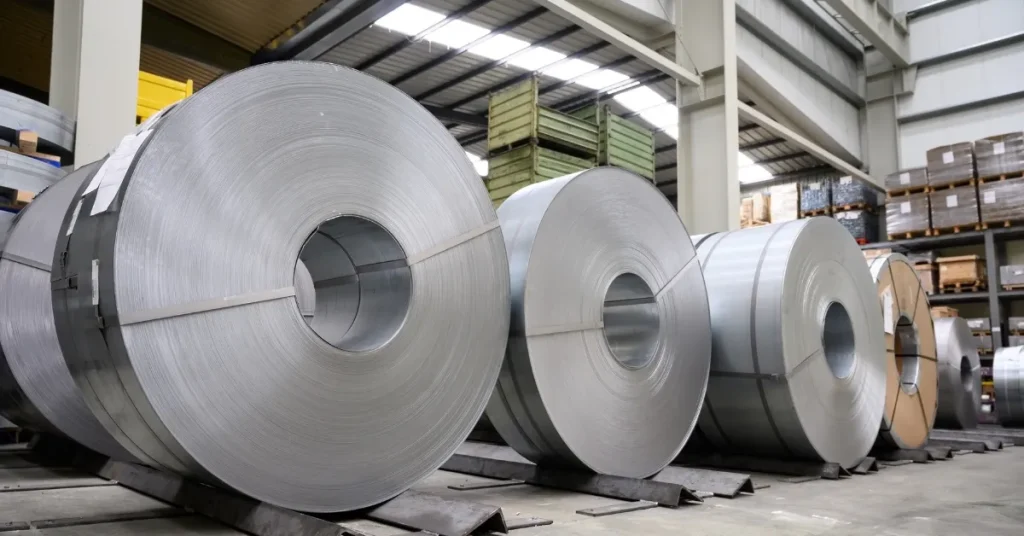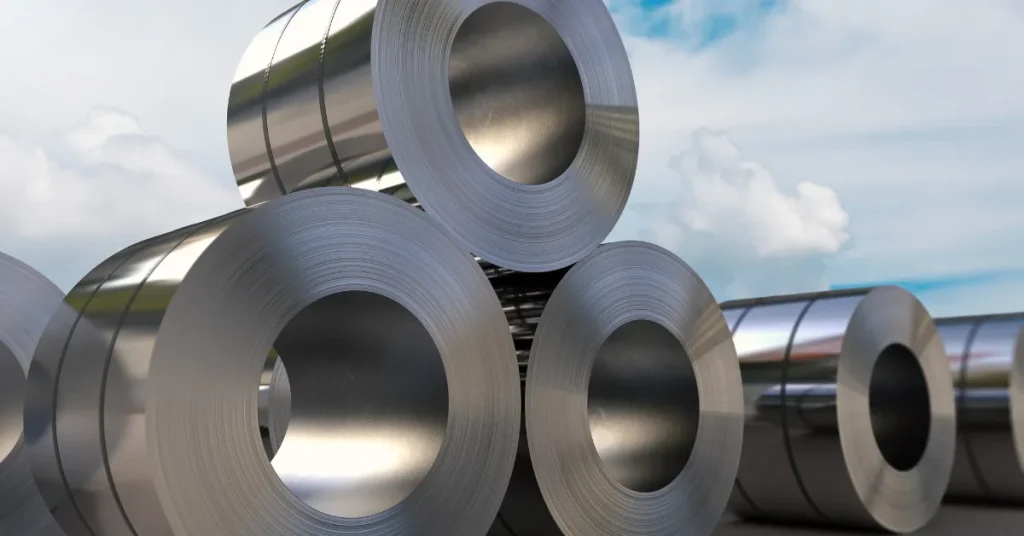28 gauge steel is typically 0.0157 inches (0.399 millimeters) thick. This measurement can slightly vary depending on the material and standards used.
Steel gauge thickness, which includes 28 gauge steel, can be somewhat confusing due to its non-linear scale.
The gauge system is a standard method of measuring the thickness of metals; the higher the gauge number, the thinner the metal.
In constructing buildings, creating metalwork projects, or manufacturing products, understanding the thickness of 28 gauge steel is vital for stability and durability.
Professional contractors and DIY enthusiasts alike often prefer this thickness for its balance of weight and structural integrity.
Steel of this gauge finds widespread use in roofing, flashing, HVAC systems, and even automotive panels, where it provides a moderate level of strength without undue bulkiness or weight.
Thus, recognizing the precise measurement of 28 gauge steel is essential for making informed decisions on material selection for various applications.

Gauges In Steel Industry
Understanding steel thickness is crucial when working with metal sheets. The industry uses a standard system known as ‘gauges.’ A lower gauge number means a thicker sheet. So, how does this apply to 28 gauge steel? Let’s explore.
Standard Gauge System
The Standard Gauge System defines the thickness of sheet metals. By assigning a numerical value, known as a ‘gauge,’ this system provides a consistent reference for comparing metal thicknesses.
Although originating from the number of times a metal could be rolled out during manufacturing, gauges now correspond to specific measurements in increments that are widely recognized within the industry.
| Gauge Number | Thickness (in inches) | Thickness (in millimeters) |
| 28 Gauge | 0.0157″ | 0.39878 mm |
| 22 Gauge | 0.0299″ | 0.75946 mm |
| 18 Gauge | 0.0478″ | 1.2141 mm |
Importance In Construction

In construction, the right gauge of steel is vital for durability and structural integrity. A 28 gauge steel, at roughly 0.0157 inches thick, is optimal for applications requiring both lightness and strength.
It is often selected for roofing, siding, and flashing where it provides solid protection without excessive weight.
- Lightweight Material: Easier to install and handle.
- Cost-Effective: Less material means reduced cost.
- Adaptable: Suitable for different types of construction needs.
Using 28 gauge steel strikes a balance between being thin enough to work with and thick enough to sustain long-term use, making it a popular choice in the construction sector.
Comparing Steel Thickness
In the world of construction and manufacturing, the thickness of steel is critical. It affects everything from durability to weight.
Comparing steel thickness is essential to understand its performance in different conditions. Let’s dive into the intricacies of one common measurement: 28-gauge steel.
28 Gauge Versus Other Gauges
The term ‘gauge’ refers to the thickness of sheet metal. A lower gauge number means thicker steel. Here’s how 28-gauge steel compares:
- 20 Gauge: Roughly 0.036 inches thick
- 24 Gauge: Approximately 0.024 inches thick
- 28 Gauge: About 0.015 inches (or 0.38 millimeters)
- 30 Gauge: A thinner option at 0.012 inches
Clearly, 28-gauge steel is on the thinner side.
Visual Representations
Imagine holding a standard credit card. That’s close to 30 gauge in thickness. Now think slightly thicker — that’s your 28-gauge steel. To further illuminate the difference, let’s use visual aids:
| Gauge | Thickness (inches) | Thickness (millimeters) |
| 20 Gauge | 0.036 | 0.91 |
| 24 Gauge | 0.024 | 0.61 |
| 28 Gauge | 0.015 | 0.38 |
| 30 Gauge | 0.012 | 0.30 |
By seeing these numbers side by side, it’s easier to grasp the relative thickness of these common gauges.
Measuring 28 Gauge Steel
Understanding the specific thickness of 28 gauge steel is crucial for various projects. This knowledge helps in selecting the right steel for tasks ranging from crafting to construction.
Learn the actual measurements and the tools needed for precise measurement.
Actual Thickness In Inches And Millimeters
The thickness of 28 gauge steel typically stands at 0.0157 inches or 0.39878 millimeters. These dimensions may slightly vary depending on the material standards or the manufacturing process.
To visualize the thickness, it’s roughly equivalent to stacking three standard business cards together.
| Gauge Number | Thickness (Inches) | Thickness (Millimeters) |
| 28 Gauge | 0.0157″ | 0.39878 mm |
Tools For Measuring Steel Gauge
To confirm the thickness of 28 gauge steel, several tools are at your disposal. It’s important to use accurate devices for reliable measurements.
- Gauge: A tool designed specifically for measuring the thickness of sheet metal.
- Calipers: Precision instruments that can give exact measurements in inches or millimeters.
- Micrometers: Utilized for highly accurate thickness readings, down to a thousandth of an inch.
Applications Of 28 Gauge Steel
Applications of 28 Gauge Steel spotlight the incredible versatility of this thin yet durable material. This type of steel finds itself woven into various industries. Its thickness—or rather thinness—offers strength without the weight, making it a favorite for numerous applications.
Building And Construction
The building and construction industry benefits greatly from 28 gauge steel.
- Roofing materials for its lightweight and durability
- Interior wall panels and framing, as its thin profile allows for more space
- Outdoor sheds and storage units due to its resistance to corrosion
Automotive Industry
The automotive sector relies on 28 gauge steel for:
- Body panels on vehicles, where strength and reduced weight improve efficiency
- Components under the hood that must endure high temperatures
- Structural pieces that require formability and resilience
Manufacturing And Crafts
Creative and practical uses abound in manufacturing and craft-making.
Manufacturers prefer this steel gauge for:
- Small machine parts
- Home appliances that balance toughness with a lighter build
Artists and crafters choose it for:
- Jewelry due to its malleability and strength
- Sculptures and model making, where precision and thinness are key
Advantages And Limitations

Understanding the thickness of 28 gauge steel leads to insights on its strengths and boundaries. This common measurement in the industry reflects a balance between flexibility and resilience.
But what makes 28 gauge steel a favored option? Let’s explore its durability, weight, cost-effectiveness, machinability, and environmental impact.
Durability And Weight
28 gauge steel shows a precise blend of toughness and lightness. Despite being 0.015″ (0.38 mm) thick, it can withstand significant stresses. Ideal for applications needing a sturdy yet lightweight material, it remains a go-to for many projects.
- Resists wear: Suitable for long-lasting structures.
- Lightweight: Easy to handle and install.
Cost-effectiveness And Machinability
When on a budget, 28 gauge steel stands out. Its economical nature does not compromise on quality, delivering value for money.
Machining this thickness is often straightforward, allowing for smooth cutting and shaping processes.
- Reduced expenses: Saves money on material costs.
- Simpler operations: Cuts and molds with minimal hassle.
Environmental Factors
The production and use of 28 gauge steel take the environment into account. It is commonly recycled, reducing the need for raw resources and energy consumption. This recycling capability positions it as an eco-conscious choice.
- Recyclable: Supports a sustainable life cycle.
- Energy-efficient: Requires less energy to produce.
FAQs About How Thick Is 28 Gauge Steel
What Is 28 Gauge Sheet Metal Used For?
28 gauge sheet metal is commonly used in automotive panels, roofing, ductwork, and HVAC systems due to its lightweight and flexibility.
What’s Thicker 18 Gauge Or 28 Gauge?
An 18 gauge is thicker than a 28 gauge. Gauge numbers decrease as the material’s thickness increases, so lower gauges mean thicker materials.
How Thick Is 29 Gauge Steel?
29 gauge steel typically measures 0. 0135 inches or 0. 34 millimeters in thickness. This size is common in roofing and siding materials.
What Gauge Is 1 16 Of An Inch?
A gauge of 1/16 of an inch equates to approximately 16 gauge in sheet metal thickness.
Conclusion
Understanding the properties of 28 gauge steel is crucial for selecting the right thickness for your project.
At approximately 0. 015 inches or 0. 38 millimeters thick, this material strikes a balance between durability and pliability.
Whether for construction, crafting, or industrial use, 28 gauge steel offers a reliable option that meets diverse needs, showcasing its versatile nature in a myriad of applications.
Resources:
1. https://apps.dtic.mil/sti/tr/pdf/ADA257412.pdf
